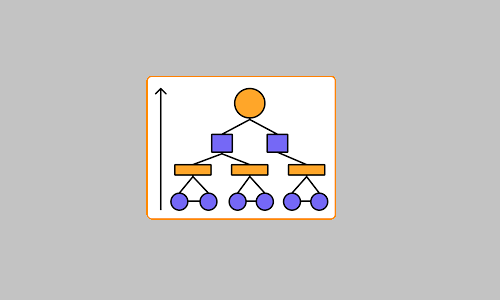
The C4 model
C4 stands for “Context, Containers, Components, and Code.” It is a software design model created by Simon Brown, a software developer and architect, to help teams design and document software systems in a clear and concise way.
The C4 model consists of four levels of abstraction:
Context: This level represents the overall system, including its users and stakeholders. It helps to provide a high-level overview of the system and its purpose.
Containers: This level represents the different logical areas of the system, such as modules or components. It helps to show how the different parts of the system fit together and interact with each other.
Components: This level represents the smaller, more specific parts of the system, such as classes or functions. It helps to show how the different components fit together to form the larger containers.
Code: This level represents the actual implementation of the system, including the source code and other technical details.
The C4 model can be used to create diagrams that visually represent the different levels of abstraction in a software system. These diagrams can be used to communicate the design of the system to team members, stakeholders, and users, and can serve as a reference for future development and maintenance.
One of the key benefits of the C4 model is that it provides a clear and standardized way to represent and communicate the design of a software system. It helps to ensure that all team members have a shared understanding of the system and its components, which can improve communication and collaboration within the team.
In addition, the C4 model can be used to document the design of a software system in a way that is easy to understand and maintain. By using a standardized approach, it becomes easier to update and evolve the design of the system over time.
Overall, the C4 model is a useful tool for software engineers and designers looking to create clear and concise diagrams to represent and communicate the design of a software system. It can help to improve communication and collaboration within a team, and can serve as a reference for future development and maintenance.
To design a C4 model of an existing system, you will need to gather information about the system and its context, including the users and external systems that interact with it, the hardware and operating system on which it runs, and the individual components and their interactions. You can then use this information to create a visual representation of the system using the C4 model template.
Here is an example of how you might go about designing a C4 model of an existing system:
Identify the context of the system. This includes the users of the system, the external systems that it interacts with, and the environment in which it operates.
Identify the container of the system. This includes the hardware and operating system on which the system runs.
Identify the components of the system and how they interact with each other. This may involve examining the code of the system to understand its architecture and design.
Use the C4 model template to create a visual representation of the system, including the context, container, components, and code.
It is important to note that the C4 model is just one way of representing a software system. There are many other ways to do this, and the best approach will depend on the specific needs and goals of your project.